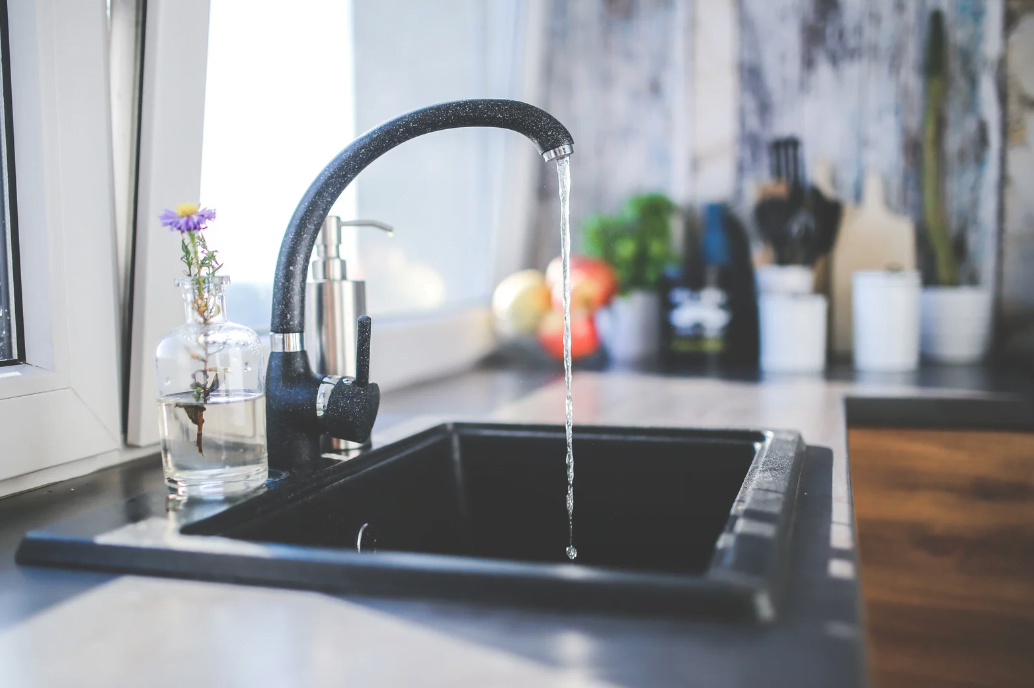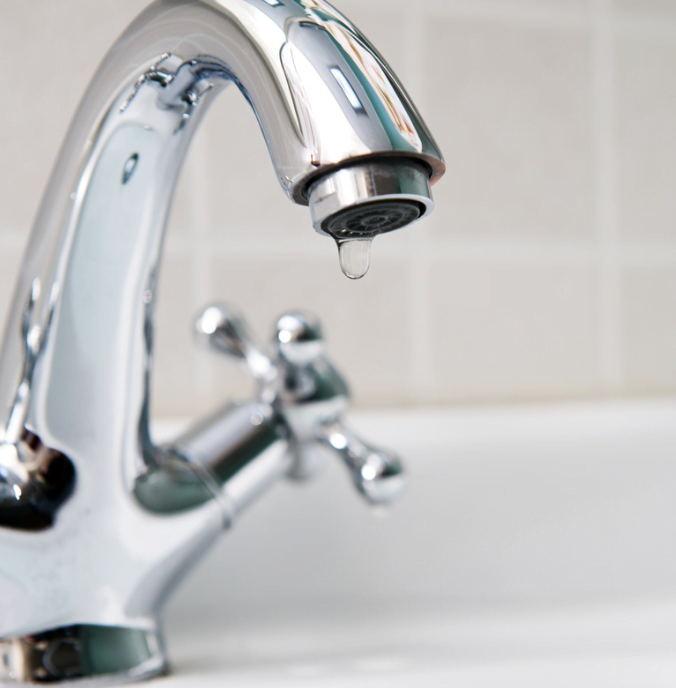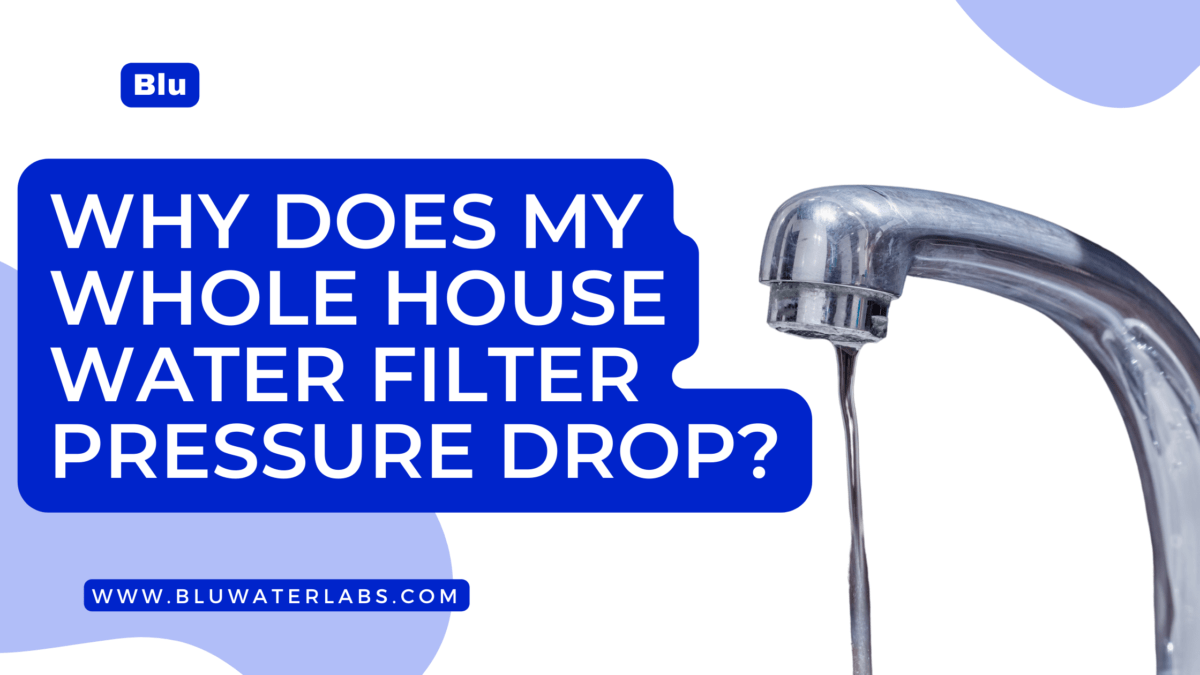Experiencing a pressure drop in your whole house water filter can be frustrating. You may be wondering why this is happening and how it affects your everyday activities. In this article, we will discuss the factors that contribute to this issue and how to address it.
One of the main reasons for a pressure drop is the restriction of water flow due to the use of a whole-house water filtration system. Ideally, the decrease in pressure should not exceed 2 to 3 psi, but pressure may be impacted further if your system is too small or clogged. Additionally, factors like the size of the pipes and the quality of source water going through the filtration media can also affect the flow rate.
Routine maintenance, such as running a backwash cycle on components that require it, can help alleviate this problem. Stay tuned as we delve deeper into these issues and provide you with practical solutions to ensure your water pressure remains optimal while maintaining the quality and benefits of your whole house water filter system.
Understanding Pressure Drop in Whole House Water Filters
Causes of Pressure Drop

There are a few common reasons for a pressure drop in your whole house water filter. These include:
- Incorrect filter size: If the filter system is too small for your household, it can lead to a decrease in water pressure. Make sure to choose the right size for your home’s needs to avoid this issue.
- Clogged filter elements: Over time, the filter elements in your system may become clogged with sediment and other particles. This can result in a reduced rate of water flow and pressure. Regularly changing the filter elements can help prevent this problem.
Effects on Water Pressure and Flow Rate
The pressure drop in your whole house water filter can impact both your water pressure and your water flow rate. Here’s what you should keep in mind:
- When the filter system is functioning properly, the decrease in water pressure should ideally not exceed 2 to 3 psi. A drop in pressure beyond this level may indicate issues with the system.
- The water flow rate, which is the measure of how much water is passing through the system, may also be affected by the pressure drop. If your system is too small or the filter elements are clogged, the flow rate can suffer, resulting in lower water pressure throughout your home.
To maintain optimal performance and avoid these disruptions, ensure that your whole house water filter is correctly sized for your needs and that you replace the filter elements as needed. Regular maintenance, such as backwashing, can also help keep your system running efficiently and minimize pressure drops.
By understanding the causes and effects of pressure drop in your whole house water filter, you can take the necessary steps to maintain proper water pressure and flow rate for a comfortable and efficient home water supply.
Factors Contributing to Pressure Drop
Pipe Size and Plumbing System
Your plumbing system and the size of your pipes play a considerable role in the water pressure and flow in your house. Larger pipes can handle a higher flow rate, while smaller pipes will limit your water flow. If your pipes are too narrow, they may not be able to handle the flow of water through your whole house water filter, contributing to pressure drop.
Filter Type and Contaminants
The type of filter in your whole house water filtration system also impacts the water pressure. Some filter media restrict the flow more than others, potentially affecting your water pressure.
Additionally, as filters become clogged with contaminants and debris, they limit the water flow and cause a drop in pressure. Regularly maintaining and replacing filters is essential for maintaining a consistent water flow and avoiding pressure drop.
Water Source and Location
The water source and location of your filtration system also contribute to pressure drop. If your water supply comes from a municipal source, ensure the water quality and flow rate are adequate. If you get your water from a well, the pumping system and distance from your filtration system can impact water pressure. Long distances between the water source and the filtration system can lead to increased pressure drop.
To maintain good water pressure in your home, choose a whole house water filter appropriate for your plumbing system, water usage, and incoming water quality. Regular maintenance and understanding these factors can help you prevent pressure drop and make sure you enjoy a steady flow of clean, filtered water.
Signs of Low Water Pressure

Leak Detection
One of the first signs of low water pressure in your whole house water filter system is the presence of leaks. Leaks can occur at various points in your plumbing system, from faucets to pipes. To identify leaks, monitor your water usage and inspect exposed pipes for visible leaks or moisture. If you notice an unusually high water bill or damp spots where they shouldn’t be, it could be an indication of a leak in your system.
Water Main Breaks
Another possible cause of low water pressure can be water main breaks. These are not always obvious, especially if the break is small or underground. Water main breaks can result in a significant drop in water pressure in your home. To determine if this is the cause, check with your neighbors to see if they are experiencing similar issues. You can also contact your local water utility company to inquire if there have been any reported water main breaks in your area.
Flushing Hydrants
Flushing hydrants is another instance that can lead to a temporary drop in water pressure. Water utility companies often flush hydrants to clear sediment and maintain water quality. During the flushing process, water is forcefully expelled from the hydrants, which can cause a temporary reduction in pressure for homes connected to the same water loop. If you suspect that hydrant flushing is the cause of your low water pressure, contact your water utility company to learn more about their flushing schedule.
In conclusion, low water pressure in your whole house water filter system could be a result of various factors, such as leaks, water main breaks, or flushing hydrants. Understanding these potential causes can help you take the necessary steps to address the issue and restore your water pressure. So, stay vigilant, and don’t hesitate to seek professional help if needed.
How to Measure Water Pressure and Flow Rate
In this section, let’s explore how you can measure the water pressure and flow rate for your whole house water filter. We will be discussing two methods: using a pressure gauge and determining gallons per minute (gpm).
Using a Pressure Gauge
A pressure gauge is a useful tool to measure the water pressure in your home. To use a pressure gauge, follow these steps:
- Turn off all running water in your house. This ensures you get an accurate reading.
- Locate the main water pipe, usually found near the water meter.
- Attach the pressure gauge to an outside faucet or hose bib near the main water pipe.
- Open the faucet and take note of the reading on the pressure gauge.
The reading should ideally be between 40-60 psi. Anything outside this range may indicate a problem with your water pressure.
Determining Gallons Per Minute
Gallons per minute (gpm) is a measure of your water flow rate. To calculate gpm, follow these steps:
- Choose a time when you’re likely to use a lot of water, such as during the morning or evening.
- Turn on all the faucets, showers, and appliances that may run at the same time.
- Collect water from each source in a container for one minute.
- Measure the amount of water collected in each container (in gallons) and add them up.
- The total sum is your water flow rate in gallons per minute (gpm).
For an optimal whole house water filter performance, it’s essential to choose a filter with a flow rate that matches or surpasses your home’s gpm.
By measuring your water pressure and flow rate using the methods above, you can ensure that your whole house water filter system operates efficiently and that your home maintains a consistent water pressure.
Improving Water Pressure and Flow Rate
In order to enhance your whole house water filter pressure and flow rate, it’s important to consider pressure regulators and switches, select the right filter system, and ensure your pipes are the appropriate size.
Pressure Regulators and Switches
A water pressure regulator can be an effective tool for maintaining constant pressure in your water system. Installed on the main water supply line, it monitors the pressure and adjusts it accordingly. Adjusting your regulator to the optimal range (usually between 45 and 65 pounds per square inch) can make a significant difference in your system’s performance.
A pressure switch, often found in well pumps, helps maintain a consistent pressure within your home’s water system. Ensuring your pressure switch is operating effectively can help prevent pressure drop issues.
Selecting the Right Filter System
It’s crucial to choose the appropriate filtration system for your household. A system that is too small or clogged can further reduce water pressure. When selecting a system, consider its flow rate and ensure it matches your home’s requirements. A higher flow rate typically results in better water pressure.
When looking into the filter lifespan, make note of the recommended replacement intervals from the manufacturer. Regularly replacing the filter elements can accomplish two things: maintaining optimal water pressure and ensuring your system effectively removes contaminants.
Pipes
The size of your water pipes can impact your whole house water filter’s pressure and flow rate. If your pipes are too small, they can restrict water flow, causing reduced pressure. When installing a water filtration system, ensure the pipes leading to and from the system are the appropriate size for your home’s water demand.
By considering these factors – pressure regulators and switches, selecting the right filter system, and evaluating your pipes – you can improve the water pressure and flow rate in your home while using a whole house water filter system.
Maintenance Tips for Whole House Water Filters
Maintaining your whole house water filter is essential for efficient and optimal performance. Here, we’ll discuss some practical maintenance tips to keep your filtration system running smoothly.
Periodic Filter Cleaning and Replacement
Regular cleaning and replacement of your filter cartridges is crucial for maintaining water quality and pressure. Here’s what you can do:
- Inspect the filter cartridges every three months or when you notice changes in water taste, odor, or color.
- Remove the filter cartridge from each housing, and clean it according to the manufacturer’s instructions.
- Replace the filter cartridges as recommended by the manufacturer, typically every 6-12 months.
By following these steps, you can ensure that your whole house water filter performs at its best and maintains proper water pressure.
Regular Plumbing System Inspection
Inspecting your plumbing system regularly is essential for preventing pressure drops and maintaining the efficiency of your whole house water filter. Monitor for the following:
- Leaks: Check for water leaks around your filtration system and plumbing fixtures. Promptly address any leaks to avoid wasting water and compromising the system’s performance.
- Pressure Buildup: Keep an eye on your water pressure to ensure it remains within the recommended range. If you notice a significant pressure drop, it may be an indication of a clogged filter or issue with the plumbing system.
- Component Visibility: Examine components with see-through bodies, such as sediment filters, to determine whether they need cleaning or replacement.
Addressing these critical points through regular plumbing system inspections can help maintain your whole house water filter’s efficiency and prevent pressure drops. Remember, a well-maintained filtration system ensures that you continue to enjoy clean, safe, and high-quality water.
Related Articles:
How to Install a Whole House Water Filter System: A Step-by-Step Guide


